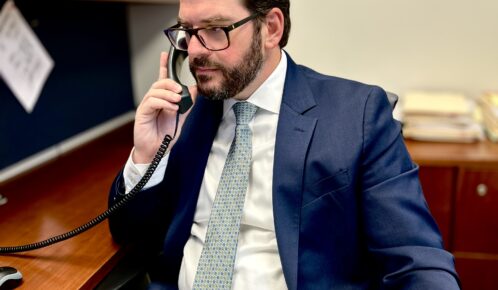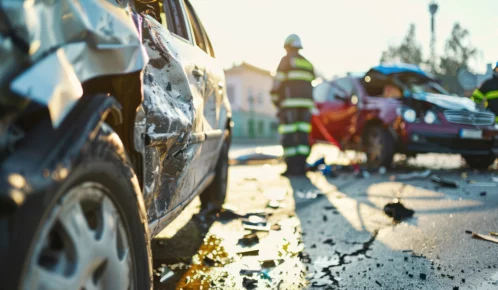Knowing how to stop police brutality can help prevent violence, unnecessary use of deadly force, injuries, and death. It can also create a safer environment for individuals and communities to thrive. Strategies for stopping police brutality in Chicago, Illinois, include providing training on de-escalation and non-violent approaches. They also include investing in officer-worn body cameras and developing stricter protocols for using those cameras. Enhancing collaboration and trust between the community and the police can also prove helpful.
Table of Contents

Factors Contributing to Police Brutality in Chicago, Illinois
Knowing how to stop police brutality requires an understanding of the underlying factors contributing to it. These factors can be at an organizational or individual level.
Lack of Police Accountability and Transparency
Police brutality is likelier to run rampant when police officers are not held accountable for their actions. They may believe they will not face serious consequences for misconduct and, subsequently, use excessive force or violate people’s rights. Lack of accountability can create a culture of impunity where officers feel they are above the law.
It is hard to identify and address problems within the department when police departments are secretive about misconduct. Consequently, unlawful policing practices continue to go unchecked and put people at risk.
Racial Bias and Discrimination
One crucial fact about police brutality is that it disproportionately impacts people of color. One of the main drivers of this imbalance is racial bias and discrimination. Bias can be either implicit or explicit.
Everyone has implicit biases, including police officers. These biases can lead to negative stereotypes and assumptions about people based on race or ethnicity. They can cause officers to view people of color as more suspicious or dangerous, even when they have done nothing wrong.
Some police officers hold explicit racist beliefs, which can lead to intentional discrimination and abuse. Their bias can manifest in profiling, unfair treatment, and even violence towards people of color.
Beyond individual biases, there are systemic factors that contribute to police brutality against citizens, including racial profiling policies, biased police training, and a history of oppression and discrimination.
Inadequate Training
Inadequate training plays a significant role in police brutality. It’s to blame for limited de-escalation skills, implicit bias, poor crisis intervention, and excessive use of force.
When officers lack effective de-escalation techniques, they are more likely to resort to force when faced with challenging situations. They may unconsciously stereotype or misinterpret situations, leading to discriminatory and harmful actions. The officers may not know how to handle individuals with mental health problems.
While some training on the use of force exists, it may not be comprehensive enough or may fail to emphasize alternatives to force. As a result, officers may use excessive force in situations that could be resolved peacefully. Inadequate training in communication skills can hinder officers’ ability to interact effectively with diverse populations.
Current Initiatives and Legislation Addressing Police Brutality in Illinois
Illinois has several initiatives and legislations aimed at addressing police brutality. For instance, it offers advanced police training focusing on de-escalation, crisis intervention, reasonable use of force, and resolving racial bias and discrimination.
The Officer-Worn Body Camera Act requires police officers to have their body cams on whenever they are in uniform and performing police work. It also outlines situations and strict procedures for turning off those cameras.
Illinois acknowledges “qualified immunity” that extends some civil liability protections to police officers. These protections allow police officers to perform their duties without fearing getting sued over every interaction with civilians.
The state also has a bill of rights law, which offers protection from investigation to police officers. This law imposes a waiting time before police officers can provide information regarding citizens’ complaints to investigators.
The qualified immunity and law enforcement’s bill of rights laws do not, however, completely block victims from getting relief. You can claim monetary compensation for your injuries, suffering, or losses by filing a civil lawsuit against the liable law enforcement officer or agency.
Some of the causes of action you can sue for include false arrest, excessive force, sexual misconduct, and wrongful death of a loved one. However, you need to prove the officer acted with “willful and wanton conduct,” not just negligence.
A knowledgeable police brutality lawyer can help you navigate the obstacles of pursuing compensation from liable police officers or agencies. The lawyer will investigate the incident to compile enough evidence to show that the police officer overstepped his or her mandate and inflicted injuries on you. The lawyer will then push for sufficient compensation for your resulting losses or damages.
The Impact of Police Brutality on Communities
Police brutality can affect people and communities physically, psychologically, and financially. It can lead to loss of life, broken trust, and constant stress. Addressing police brutality through effective reforms and community engagement is instrumental in creating a safer and more just society for everyone.
Misconduct and harassment from the police can lead to severe injuries and death. They also inflict fear and mistrust in the public, who expect protection from the police.
When people do not trust the police to protect them, they are less likely to report crimes or seek help to file a civil rights complaint against the police. The outcome is an unsafe environment for everyone.
Living in fear of police brutality can cause mental health issues. Studies show a clear link between police killings and poor mental health in communities.
Resistance From Law Enforcement
Police brutality can cause physical harm and erode trust in law enforcement. Lack of trust can lead to resistance from law enforcement.
People who feel unsafe and distrustful of the police may be less likely to report crimes or seek help from officers. As a result, it can be difficult for the police to do their job effectively, leading to increased criminal activity. Additionally, this distrust can manifest as resistance to police authority, including protests, civil disobedience, and even violence.
In response to resistance, some police officers may become more aggressive and militaristic. They may inflict further abuses, leading to further erosion of trust. If these actions persist, they can create a vicious cycle of brutality, mistrust, and resistance that is difficult to break.
Strategies and Solutions to Stop Police Brutality in Illinois
Enhanced Training on De-escalation Techniques and Non-violent Approaches
Police officers must know how to calm tense situations, rather than worsen them. As such, they should receive enhanced training on de-escalation. The training can help officers:
- Learn to communicate and encourage people to cooperate to prevent misunderstandings that can worsen things.
- Use force less often, resulting in fewer injuries and problems in court.
- Assess situations, stay safe without putting others in danger, and prevent situations from getting out of control.
- Build trust, since people trust the police more when they see officers calmly resolving situations.
- Understand the emotions of the people they encounter to tailor their approach to each situation
- Improve skills and be better at their jobs, helping them make better decisions under pressure.
Key de-escalation techniques involve active listening, paying attention to body language, taking space, taking time, and making clear choices. Police officers must listen to what people say and feel, not just words. They should also consider posture, expressions, and gestures since they can say much without words.
Body Cameras and Stricter Protocols for Their Use
Body cameras are small cameras worn by police officers that record their interactions with the public. They offer several benefits, especially when paired with stricter protocols. Recordings provide a more accurate picture of events, helping hold officers accountable and build trust between police and the public.
Footage can help investigate alleged police misconduct, ensuring fair and transparent outcomes. Police officers may hesitate to use excessive force when their interactions with the public are on record. The outcome is fewer police brutality incidents.
Footage can provide evidence in cases where force is used. A review of that footage can help determine whether the force was justified and proportional.
Cameras can encourage officers to behave professionally and respectfully. This is because the officers know their actions are getting documented. Footage can be used for training purposes. They can highlight best practices and identify areas for improvement.
Increase Community-Police Collaboration and Trust-Building Efforts
Trust is the cornerstone of good policing. Police departments can build trust by practicing fairness, listening to the community, and working with community members to address disorder and crime.
Three key concepts that help build trust include procedural justice, bias reduction, and racial reconciliation. Officers should treat everyone fairly, explain their actions, and be open to feedback. They should also recognize and address unconscious bias to ensure fair treatment for everyone.
Police departments need to acknowledge the history of racism and work to build a more inclusive society. By implementing these concepts, they can create an environment of trust and collaboration with the community. As a result, there will be better policing, safer communities, and a stronger relationship between police and citizens.



